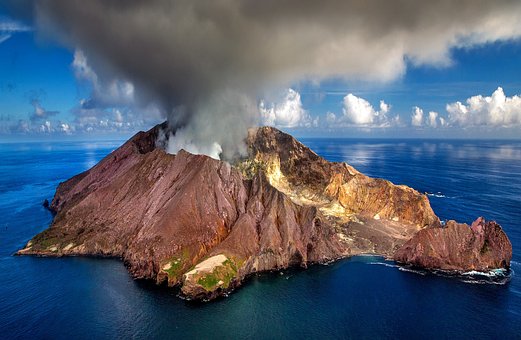Define mantle plume and explain its role in plate tectonics
Mantle plume is an up-welling of abnormally hot rock within the earth’s mantle which carries heat upward in narrow, rising columns, driven by heat exchange across the core-mantle boundary. Eventually, the rising column of hot rock reaches the base of the lithosphere, where it spreads out, forming a mushroom-shaped cap to the plume.

Geophysicist, W. Jason Morgan, developed the hypothesis of mantle plumes in 1971. The largest (and most persistent) mantle plumes are presumed to form where a large volume of mantle rock is heated at the core-mantle boundary, about 1800 miles below the surface, although smaller plumes may originate elsewhere within the mantle. Heat transferred from the plume raises the temperature in the lower lithosphere to above melting point, and forms magma chambers that feed volcanoes at the surface.
Role of Mantle Plume in Plate Tectonics :
•Mantle plumes transport primordial mantle material from below the zone of active convection; produce time-progressive volcanic chains; break up continents; and act as a driving force for plate tectonics.
•The narrow conduits of deep-mantle material rise through the solid mantle before spreading out laterally in the upper asthenosphere. From there, they cause the lithosphere to swell and shear as the heat from the plume increases the temperature of lower lithosphere.
•The plume remains anchored at the core-mantle boundary that’s why it does not shift position over time. So, as the lithosphere plate above it moves, a string of volcanoes (or other volcanic features) is created. Eg. formation of Hawaiian Islands and Emperor seamount chain in the middle of the pacific plate.

•The eruption of continental flood basalts is often associated with continental rifting and breakup. This has led to the hypothesis that mantle plumes contribute to continental rifting and the formation of ocean basins. Thus, from the above discussion it becomes sufficiently clear that mantle plumes are strong enough to induce rifting and formation plates.
Comments